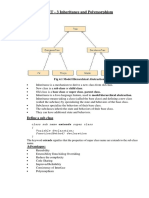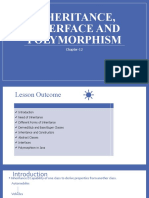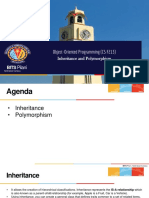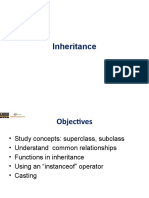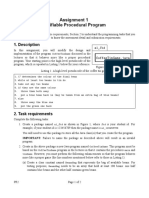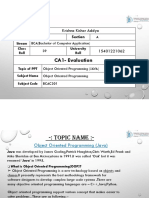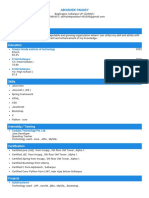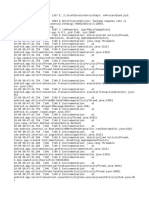0% found this document useful (0 votes)
26 views28 pagesLecture 6 Inheritance
This lecture covers key concepts of Object-Oriented Programming, focusing on inheritance, access control, and method overriding. It explains the relationships among classes, the use of the 'super' keyword, and the differences between method overriding and overloading. Additionally, it highlights the advantages of inheritance, such as reusability and maintainability.
Uploaded by
spartaking960Copyright
© © All Rights Reserved
We take content rights seriously. If you suspect this is your content, claim it here.
Available Formats
Download as PDF, TXT or read online on Scribd
0% found this document useful (0 votes)
26 views28 pagesLecture 6 Inheritance
This lecture covers key concepts of Object-Oriented Programming, focusing on inheritance, access control, and method overriding. It explains the relationships among classes, the use of the 'super' keyword, and the differences between method overriding and overloading. Additionally, it highlights the advantages of inheritance, such as reusability and maintainability.
Uploaded by
spartaking960Copyright
© © All Rights Reserved
We take content rights seriously. If you suspect this is your content, claim it here.
Available Formats
Download as PDF, TXT or read online on Scribd
/ 28
















